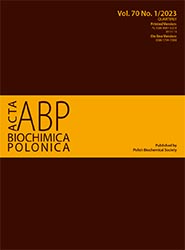Timosaponin AIII attenuates precocious puberty in mice through downregulating the hypothalamic-pituitary-gonadal axis
Abstract
Precocious puberty (PP) has increasingly become a social concern. This study aimed to investigate the effect of timosaponin AIII (TAIII) on the precocious puberty and its possible mechanisms in mice. Four groups of mice consisting of controls that received saline or TAIII, a model that received leptin to induce precocious puberty (PP), and leptin+TAIII (the leptin model treated with TAIII) were used to determine the effect of TAIII on PP. Pathological and cytological examinations were conducted to investigate the signs and onset of PP and the development of reproductive organs. The level of serum luteinizing hormone (LH), follicle stimulating hormone (FSH) and estradiol (E2) were determined using enzyme-linked immunosorbent assay (ELISA). The expression of genes related to the hypothalamic-pituitary-gonadal axis (HPGA) was assessed using qRT-PCR and Western blotting. Bone mineral density (BMD) was determined using high resolution peripheral quantitative computed tomography. In mice treated with leptin, earlier vaginal opening and estrus were observed, as well as the increased ovarian and uterine weight, total uterine cross-sectional size, number of corpora lutea, and elevated serum sex hormone levels and HPGA expression. On the other hand, TAIII treatment delayed the vaginal opening and vaginal estrus to 32.1 and 37.5 days after birth, and delayed the development of reproductive organs, leading to significantly smaller uterus and ovary size, less corpora lutea and low BMD (P<0.05). In addition, the serum levels of LH, FSH and E2 were significantly reduced (P<0.05) and so was the expression of HPGA and leptin genes (P<0.05). Our experimental data demonstrated that TAIII has activity against leptin-induced PP activity and may attenuate PP by reducing reproductive hormones and deactivating the hypothalamic-pituitary-gonadal axis through downregulating leptin expression.
Acta Biochimica Polonica is an OpenAccess quarterly and publishes four issues a year. All contents are distributed under the Creative Commons Attribution-ShareAlike 4.0 International (CC BY 4.0) license. Everybody may use the content following terms: Attribution — You must give appropriate credit, provide a link to the license, and indicate if changes were made. You may do so in any reasonable manner, but not in any way that suggests the licensor endorses you or your use.
Copyright for all published papers © stays with the authors.
Copyright for the journal: © Polish Biochemical Society.


